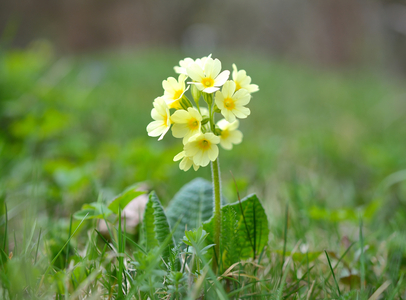Profile
The cowslip or primrose(Primula veris) belongs to the primrose family(Primulaceae). It is also known as meadow primrose, spring primrose, medicinal primrose and cowslip.
Its original name "cowslip" dates back to the 15th century. The German name Schlüsselblume or Himmelschlüssel is probably due to the inflorescence, which resembles a bunch of keys. It is a medicinal plant with a long history: even in the Middle Ages it was used as a proven medicine, especially for coughs.
Utilisation

Cowslip is a popular medicinal plant for treating coughs and colds. Cowslip(Primula elatior) may also be used for the production of medicines, as there is hardly any difference in the ingredients. The underground parts of the plant (rhizome with roots) are used, occasionally also the flowers (with or without sepals).
The medicinal effect of both primroses is mainly based on the so-called triterpene saponins, which are found in the underground parts and the flowers. They help to liquefy the viscous mucus in the lower and upper respiratory tract, making it easier to cough up colds and other respiratory diseases. Primrose flowers also contain flavonoids.
The rhizomes were once used in part as a sneezing powder, and the flowers are also used to colour Easter eggs.
Botany
The cowslip is a perennial, herbaceous plant that grows to a height of 10 to 30 centimetres. Its leaves form a basal rosette. The leaves are simple and undivided. Their shape varies somewhat, but they are usually broad-ovate to ovate. The leaf is rounded at the front and more or less truncated at the base, contracting into a winged petiole.
It flowers from March to May. This is when bright yolk-yellow flowers with a pale green calyx form on the hairy stems and are arranged in umbels. What distinguishes the primrose from other species are the orange spots on the throat of each petal. The flowers of Primula veris also exude a pleasantly sweet fragrance.
Service
The preservation of diversity is very important to us, which is why we store around 5,400 samples of seeds and plants in our gene bank . With the gene bank for agricultural crops, medicinal and aromatic plants, we are making a significant contribution to the preservation of biodiversity.
Last updated: 28.08.2025
automatically translated